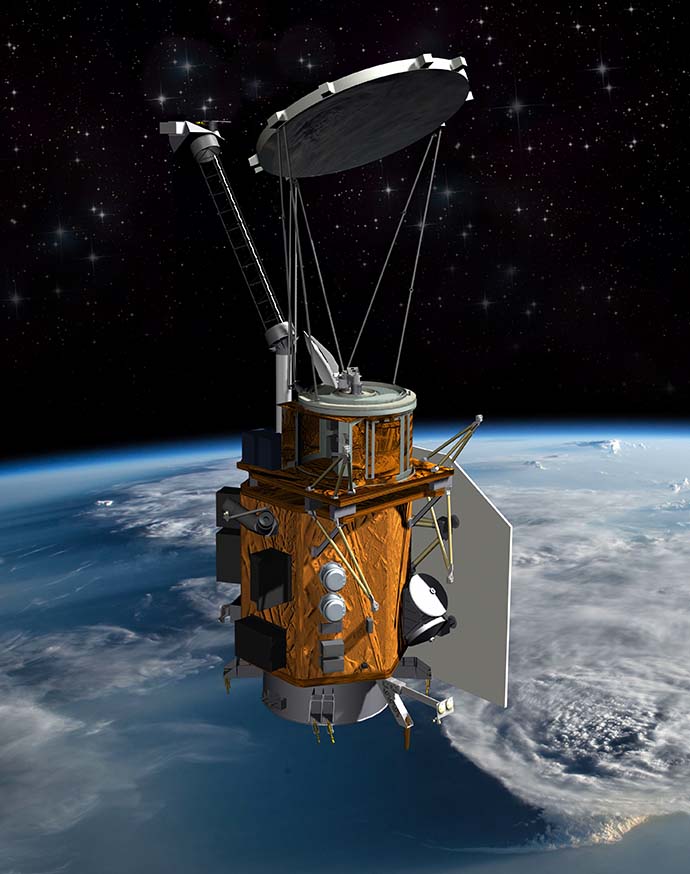
Weather System Follow-on - Microwave
Improving weather forecasting over maritime regions
Measuring and understanding the physical environment is critical to military operations, from determining tropical cyclone intensity for asset protection and maneuver operations to how wind and sea state play into assured access and aircraft carrier operations.
The Weather System Follow-on – Microwave (WSF-M) represents the next-generation operational environmental satellite system for the Department of Defense, providing critical and actionable environmental intelligence to military operations in all warfighting domains.
Designed to address three high-priority space-based environmental monitoring (SBEM) requirements, WSF-M will ultimately mitigate six existing SBEM gaps:
| High Priority SBEM Gap | Additional SBEM Gaps |
|
|
|
|
|
|

What We're Doing
Spacecraft, instrument & system software provider, integration & test lead
At the heart of the WSF payload is the Ball-built Microwave Imager (MWI) sensor that takes calibrated passive radiometric measurements at multiple microwave frequencies to determine sea surface winds, tropical cyclone intensity and additional environmental data. In addition, a government-provided Energetic Charged Particle (ECP) sensor will provide space weather measurements.
The instruments will provide valuable mission data to ground systems for processing and analysis. More importantly, WSF-M will broadcast real-time and actionable environmental intelligence to military operations in all warfighter domains.
The WSF-M bus will be based on the Ball Configurable Platform, a proven, agile spacecraft with 50 years of on-orbit operations for affordable remote sensing applications. The low earth orbit (LEO) space vehicle is capable of sensing, storing, and transmitting microwave raw sensor data to enable derivation of Ocean Surface Vector Wind (OSVW), Tropical Cyclone Intensity (TCI), Snow Depth, Soil Moisture, and Sea Ice Characterization.
Ball is an industry leader in the design and development of advanced operational weather systems. WSF-M extends our legacy of providing precise measurements from space to enable more accurate weather forecasting. Our civil weather experience includes: Suomi National Polar-orbiting Partnership (Suomi-NPP), Joint Polar Satellite System (JPSS)-1 and GMI.
